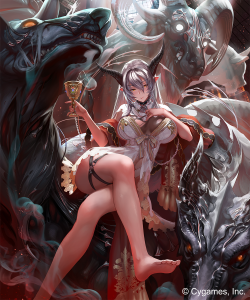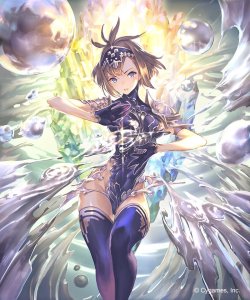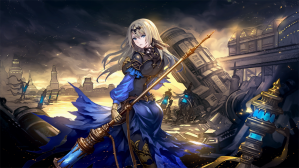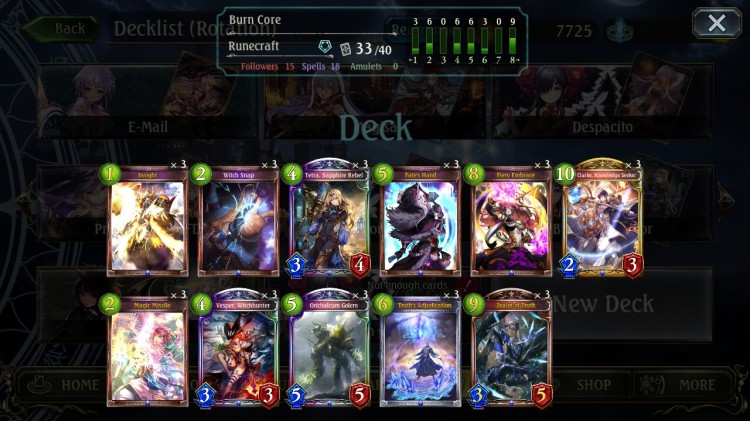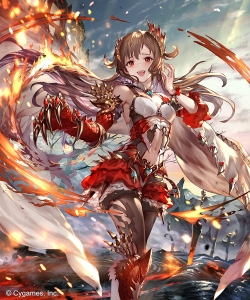This post was originally titled “Reasons I stopped playing Shadowverse”, but I put off writing some parts for a long time and got busy with other things. Recently, there was the announcement of SV: Worlds Beyond, which is effectively Shadowverse 2. It will be a reboot of the game and will have a different ruleset, so everyone will start fresh. It was also announced that both the original SV and Worlds Beyond will continue to be developed. However it is pretty clear that the focus of the SV team’s resources in the future will be on Worlds Beyond, so this will be a slow sunsetting of the original SV.
So in light of this news I have decided to instead re-frame the post as a summary of some pitfalls that I hope the new SV will avoid, instead of making this a huge rant about why I stopped playing the game. The SV team has a lot of experience now between developing the original SV, making the Switch game Champion’s Battle, and even making the paper version of the game SV Evolve. So I hope they can learn from their mistakes and make Worlds Beyond the best game it can be.
About me, I started playing Shadowverse right when it released in the tail end of 2016. Worlds Beyond is set to come out in the middle of 2024, so that means the original SV will have lasted for about 8 years. The game had a pretty good run, and during the years I’ve played many card games; SV is the only one that has held my interest and it’s the one that I’ve been willing to keep up with. Things weren’t always perfect, but I feel like the direction of the game was overall fine… until 2020. Specifically, until the release of the Storm over Rivayle expansion in September 2020. In my opinion this expansion was the beginning of the end for SV, and was the starting point of many of the issues that make modern SV the mess that it is today.
I stopped playing SV at the start of 2023 with the release of the Azvaldt expansion. But even when not playing, I was still subscribed to some SV streamers so I was able to keep up with the state of the game. With this, I would say that SV went through 3 phases:
- the classic era from the start to Omen of the Ten(2016 – 2018)
- the 2nd era marked by leader effects and the blurring of lines between midrange and OTK decks. This was from Omen to Rivayle(2018 – 2020)
- the bad Modern era from Rivayle and beyond(2020 – present)
While there were things from the 2nd era that bothered me, the game didn’t really start nosediving until the Modern era. So I would like to identify the key issues from Rivayle onwards that characterize modern SV.
It’s worth mentioning that we know the SV team works about 6 months in advance for releases. Since new expansions are released every 3 months, this means the team is always 2 expansions ahead. Going by this time reference, this means that Rivayle was likely the first expansion to be developed entirely during the COVID19 pandemic.
(Bad) shift in card design
In the Shadowverse and card game communities, there is a common term called “vanilla stats”. It indicates the full stats that a follower(creature) with no abilities should have. For example, in SV a 1 cost follower would be a 1/2(1 attack and 2 health), a 2 cost follower would be a 2/2, etc… If a follower had some kind of premium ability, it would have reduced stats. And in SV, it would sometimes not gain the full +2/+2 stats for evolving.
Example: Priest of the Cudgel was a Havencraft card commonly played in the first few SV metas. It has an evolve ability to banish an enemy follower with 3 health or less, which is effectively the Haven spell Blackened Scripture. Because of this evolve ability, it only gains +1/+1 when evolving. Similarly, Karyl was a Runecraft card that saw a lot of play when she was available in Rotation. She has a powerful Fanfare(on play) ability AND a powerful evolve ability. Since she’s a 6pp 4/6(when the vanilla statline for 6pp followers is 6/6), she takes a hit in stats AND only gets +1/+1 when evolving.

In Rivayle this basic philosophy was thrown out of the window. We started off by getting fully statted followers with premium abilities on them, no conditions required. Now we get fully statted followers with upside after upside. Cards no longer have downsides, and it feels like every new follower is an opportunity for the developers to cram as many abilities as possible into them.
Just look at Georgius. This card has 3 premium abilities on it, and yet has full vanilla stats and full evolve stats. This kind of nonsense card design has infected all of modern SV.
Merging of finishers and removal
The most egregious example of bad modern SV card design lies in the finishers. Like the name implies, finishers are cards that are commonly used to end the game. In SV, finishers usually end the game by dealing a large amount of face damage to the enemy leader, and this is typically achieved with Storm or burn cards. Storm is SV’s version of the Magic keyword Haste, allowing followers to attack the turn they are played, while burn cards are usually spells that deal direct damage to the enemy leader.
As SV is a very Hearthstone inspired game, it does not give players the ability to respond during their opponent’s turn. Which means that you can’t “counter” cards the way you would in a game like MtG. So instead you counter them by playing proactively or by playing certain cards in anticipation of your opponent’s finisher. The way you are supposed to beat Storm cards is to play followers that have the Ward keyword on it, since that keyword forces enemy followers to target them before anyone else. Burn spells do not get stopped by wards, but they do not put any stats on board. So the way to beat burn cards is to create a big board. The burn player would love to throw all the burn spells at face, but doing that means conceding the board to the opponent. They might have to reconsider that if ignoring the opponent’s board could lead to a loss next turn from the backswing.
So finishers have their place, and there is nothing inherently wrong with them. The game is known for having big flashy finishers, and it’s kind of Shadowverse’s brand by now. Cards like Dimension Shift and Rhinoceroach were part of the Classic set after all.
The issue is that in modern SV, storm and burn cards all have removal stapled on to them. Since you can’t act on your opponent’s turn, this removes any semblance of counterplay that a game like SV could have. You can’t stop storm cards because all the stormers kill the board anyway. In some cases, putting up a board makes you take MORE damage. The burn player doesn’t need to worry about the consequences of ignoring the opponent’s board, because the burn spells conveniently delete the board at the same time. In old SV, players often had to make decisions on whether to push their gameplan(dealing face dmg) or to slow down and respond to the opponent’s board state. The modern cards do everything simultaneously so this there is no longer any decision making.

Removal is unplayable
One of the consequences of all these followers having removal attached to them is that nobody plays actual removal spells anymore. As in, reactive cards that can only target the opponent’s cards. Other than SV, I’ve played a lot of card games over the years(Hearthstone, MtG, Eternal, LoR, etc…), and powercreep is one of those things that is inevitable. It happens to every CCG because card games often start with simple card designs to ease everyone in, and as the developers play around with the design space things will naturally become more complex over time. If this complexity goes unchecked, then you could get a Yu-Gi-Oh situation where all the cards have literal paragraphs of effect text.
So powercreep is inevitable, but is there a specific tipping point where it becomes excessive? A good litmus test I’ve seen is that in a specific meta, the powercreep has gone too far if removal is not being played. In modern SV, no one plays removal because it’s better to play proactive cards that have removal stapled on to them. This is worrying because out of all the CCGs I’ve played, Shadowverse easily has the best removal I have ever seen. For example, Fiery Embrace in old SV was traditionally one of the most complained about cards in the game. Because of its cost reduction effect, it was a removal spell that was very often played for 0 play points. And yet, the card has not seen any competitive play for the past 3 years. Similarly, Forest has a card called Feral Awakening, which is a 1pp spell that destroys a follower with 4 attack or less. Most followers up to 4pp have at most 4 attack, so this is effectively a 1 cost card that can kill anything that costs up to 4. It’s insane mana efficiency, and yet still this card doesn’t see any play.

A literal 0 cost removal spell seems pretty broken in a vacuum, but in the context of modern SV it’s still a card that only does one thing. Even worse, it’s a pure reactive card, as it can only be played if there is an enemy follower on board. Why would anyone play Fiery Embrace(a card that does 1 thing) when cards like Wilbert, Luminous Paladin exist? Wilbert is a card that has Fiery Embrace stapled on to it, additionally creates a 3/5 Ward, a 1/2 Ward, and also activates a permanent face damage effect on the enemy leader for the rest of the game. This is where SV is right now.
Another consequence of all these modern cards just being fully statted followers with removal stapled on to them is that it pushes for all decks to have OTK(one turn kill) finishers. Now there is nothing inherently wrong with OTKs, but every single modern SV deck relies on big out-of-hand damage to win the game. Strategies that involve building a board and then leveraging a board advantage are not viable because all of the new cards just delete the board for free.

Card games are more interesting when you make more decisions. These range from deckbuilding decisions to actual in-game decisions. Deckbuilding decisions can include struggling to fit in the right amount of proactive vs reactive cards. In-game decisions are self explanatory, but in the context of removal they can include situations like not using it early, saving it for a big tempo swing. There is also playing around removal: for example, it’s your turn and you have a 3/2, 3/5 and 2/3 and your opponent has a 3/3. Normally the correct play is to make the value trade with your 3/5, but if you know your opponent’s deck has a 3 dmg AOE card, it can sometimes be worth making the suicide trade of the 3/2 into the 3/3 so that your board survives the potential AOE. You saw these kinds of plays all the time in old SV, sometimes involving people pre-evolving followers to play around common removals and AOE. But the way the game is now, all of the proactive cards have blow up the board for free so there is no longer any decision making.
Loss of class identity
One of SV’s biggest strengths over other card games was in its class identities. All 8 of the Shadowverse classes are very unique and this really plays into the whole class fantasy too. This is reflected both visually and in the game mechanics. For example, Shadowcraft has a lot of skeletons, zombies, and ghosts. It really feels like you are playing a necromancer, with the class mechanics where you sacrifice followers and bring them back from the dead. Rune has a lot of witches and sorcerers, and this is reflected in its class mechanics which includes a lot of spell synergy.
Classes also had well set strengths and weaknesses. Because of its spell synergy nature, Rune had weaker followers but the most efficient card draw. Haven was the cleric class and Blood was for vampires, so efficient healing was reserved for these two. Sword had the best quality followers but weak card draw, Dragon was the late game class so it gets big Stormers, etc…
Thankfully, the solid visual design of the SV class cards has remained untarnished over the years. But mechanically, everything has gone downhill. Classes can do literally everything now. Everyone gets efficient draw, healing, stormers, you name it. It is important for classes to have well defined strengths and weaknesses, and this is no longer the case in modern SV. The class identities have been blurred and there are only strengths, no weaknesses.

Quest decks
The term come from Hearthstone, where quests were special spells that were guaranteed to be in your opening hand. The quest would grant some kind of powerful, but conditional reward as it required its player to complete a list of tasks. So decks would be built around these legendary quests. When they were first released in Hearthstone’s Ungoro expansion, I remember them being poorly received due to the lack of counterplay and in how one-dimensional these decks were. Imagine my surprise when Quests were brought back for the Saviors of Uldum expansion. Imagine my surprise yet again when Cygames decided it was a good idea to bring them over to Shadowverse.
To Shadowverse’s credit, quests aren’t an actual mechanic like they are in HS. But in modern SV, the vast majority of competitive decks play identically to quest decks. Every single deck has a list of tasks to complete, and once this is done their win condition becomes online. Last Words Shadow wants to hit 10 Last Words followers destroyed as quickly as possible. Wrath Blood wants to hit itself 7 times. Evolve decks want to hit 5 or 7 evolves as quickly as possible, etc…
Just like HS, there is no real way of stopping or slowing down your opponent’s quest progress. The quest rewards are quite powerful, so gameplay devolves to both players racing to complete their quest first.
E-Sports and casual play
So this part is not related to gameplay at all. Shadowverse originally came out in late 2016, at the peak of popularity for digital card games. Hearthstone was consistently a top 10 viewed category on Twitch and there were tons of new digital CCGs coming out. In the current year 2024 digital card games have declined considerably; they still get played a lot, but the casual viewership doesn’t even come close to how it was 8 years ago.
If you were around back then, you’d know that there were talks of the game possibly becoming as big as Hearthstone. That obviously didn’t happen, and maybe one reason was Cygames fumbling by releasing two bad expansions in a row(Tempest of the Gods and Wonderland Dreams) during the time period when SV had a lot of eyes on it. But I think a bigger reason is in how the game was marketed. In the West, SV is marketed as this serious competitive E-Sports ready card game, and I feel that is a huge misstep on Cygames’ part. Competitive communities need to be grown and not forced, and there needs to be interest in the first place. In Shadowverse(and card games, and likely games in general), the vast majority of people are not interested in playing competitively. Most people play casually and collect cards at their own pace.
There’s a disconnect between how the game is marketed in the West vs how most people play the game, so I do hope that Cygames re-evaluates their strategy here for Worlds Beyond. Over the years Cygames sponsored a lot of content creators to do streams: seeing them just do a 1-off stream and then never play the game again was not a very good look in my opinion. Maybe it would be better to sponsor the people who actually stream SV consistently. In the West I also think it would be better if the game was marketed as a fun and casual card game, and then the competitive community could slowly grow, build interest, and go from there. But then what about game modes for casual players who don’t want to play Constructed? Take Two and Open Six are pretty good, but I feel like there needs to be something else. Some of the most fun I have ever had in card games is on the release day of a new set, where you and your friends crack open packs and build whatever decks you can make from the cards you open. That kitchen table experience just doesn’t happen in SV.
To be fair, what I’m describing isn’t just an SV problem: it’s an issue that all digital card games have, and I feel like none of them have been able to properly address it. I don’t really know what the answer is to this issue, as I can all I can do is identify that there is a problem. Maybe more events and temporary play modes, like Pauper and Artisan from Magic the Gathering Arena. I wanted to point this out because card games are quite niche, and there is another equally niche community I was a part of: fighting games. Recently I have seen that fighting games, spearheaded by Street Fighter VI, were able to make great strides in broadening their appeal to casual and competitive players alike. So I would like to see a similar thing happen to card games, and it would be pretty cool if Shadowverse Worlds Beyond were the one to lead this charge.
Conclusion
So yeah, the biggest issue is the trend Rivayle started of making fully statted followers with premium abilities stapled on to them, particularly removal. This snowballed into a whole slew of issues that have plagued modern SV and brought the game to the state it is in today. If Worlds Beyond can avoid treading this path, then the game should have a bright future.
To end on a positive note, even though card design and balance have been a dumpster fire in modern SV, Cygames has done some amazing work in the other parts of the game. Shadowverse is the digital card game that has the best QoL(quality of life) features, bar none. Replays, a tournament client that can see both player’s hands, the ability to quickly generate a code to copy/paste decklists from the game and the Shadowverse Portal website, being able to play different formats(especially draft) in private matches, the list just goes on. The game and client are also incredibly well optimized. My old 11+ year old laptop running Windows 7 that couldn’t even emulate PSX games at full speed had no issues running SV. Similarly, I had a very old budget LG phone for the longest time that couldn’t even play games like Mahjong Soul… but SV was buttery smooth. Bugs are also identified very quickly and squashed.
One reason SV and Cygames products in general tend to be so well optimized is because they are mobile games first, and the Japanese smartphone industry is fairly behind in comparison to the rest of the world. So they probably spend a lot of time and resources making sure that their games can run on weaker devices. I do hope this philosophy continues in Worlds Beyond so that the game does not require a top-of-the-line device to run properly.




